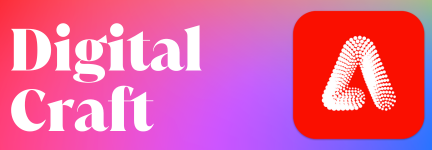
Meet the Technologists: Ben James

Ben James recently joined GALE as its first-ever chief innovation officer - a job title which he admits can invite a certain degree of scrutiny. Hoping to clarify what this new position entails, Ben opened up to us about his career journey in the industry so far - from early agency work at Crispin Porter + Bogusky to recent success with T Brand at the New York Times - and shared his thoughts on everything ‘innovation’, including how he learnt not to go too early on ideas, why remarkable innovations are often borne from deep client relationships, and the industry’s historical overpromise and under-delivery of big data.
GALE intends to further establish itself as an innovator in the content and media space, developing a new innovation discipline, building processes, programs, activations, prototypes and campaigns for its clients - to name just a few of Ben’s new responsibilities. The new ‘CIO’ will be instrumental in building relationships and collaborating with media partners, publishers and platforms to deliver new marketing ideas that drive transformation.
When the agency announced Ben’s arrival, the president and CEO of GALE, Brad Simms, said that his innovative pedigree and great experience working for ground-breaking companies will help the agency “redefine what innovation means for GALE and our clients.” To discuss how this transformation will come about and see how the chief innovation officer is settling into his new role, LBB’s Ben Conway caught up with Ben.
LBB> When you were growing up or starting to get into the industry, what creative content stood out to you or inspired you?
Ben> I've been selling, placing and designing ad work since I was in high school in 1994. I managed to hack my school schedule where I could drive around town in my '67 Mustang, selling ads to the local tuxedo shop or the pest control company.
I have long had an answer to this that strikes people as a little strange - the Chrysler Building is my favourite piece of branded content of all time. The Chrysler Building changed the world. The NY skyline was just the NY skyline, and then it had the Chrysler Building in it.
It's important that we consider it for when it was released and that times are changing around the idea of work and monuments to corporate culture - but as the son of an architect, the Chrysler Building always struck me as something special and symbolic of branding.

LBB> You've just had your first couple of months at GALE - what led to the decision to join?
Ben> What really excites me about GALE is our audience understanding. GALE is a data agency at its heart. It's analytics, it's CRM, it's media planning, it's earned media and creative operations. We have all these great things built off audience understanding and great relationships with clients. That's exciting because I like understanding the connection between business and audience. There's so much good in the world that can come from our work when those relationships exist.
LBB> What were your previous few roles like and what have you brought from those roles forward into this one? What did you do at the New York Times, for example?
Ben> NYT and CP+B provide strong bookends to what I view as the end of chapter two of my career and the start of chapter one, respectively. Both were crucial to my approach and thinking, as were stops along the way at CAA and some time spent working closely with Pelle [Sjoenell] in the early days of BBH.
My experience at The Times is perhaps best used to understand what we are trying to achieve first with ‘innovation’ here. My point of view there was that, as the most cited news organisation in the world, we were on the cutting edge of the zeitgeist each day. There were wildly remarkable things happening inside the Times to reach readers in respectful, thoughtfully designed, considered ways - new kinds of media targeting, emerging spaces like gaming, audio, AR, immersive - was all stuff happening there every day.
Now I'm beginning 'chapter three' and I'm excited to do it as chief innovation officer at GALE because we can use innovation to approach relationships with media partners and publishers differently.
LBB> Chief innovation officer is a role that can differ very much depending on what sort of agency or company you're a part of. In your first couple of months, what has your day-to-day looked like?
Ben> When you put innovation in your title, it invites a lot of scrutiny and questions about what we mean by that. And that's because I think the word is overused and a bit misappropriated by the industry.
But innovation is an approach. It is funnelled naturally into the way we work and it represents the opportunity to reach audiences where there are new and emerging connections in media. So our first focus is to connect with platforms, publishers and media teams to understand their audiences and work on new ways to help our clients bring value to those spaces.

LBB> Obviously, part of your role is also internally-facing - innovating your own processes, as well as the service you provide for clients. How much is your job weighted to internal versus external innovation?
Ben> They feel inextricably linked - though we may not be able to easily point to a direct correlation. So, both. We need more folks to join us. We need to work to be the best partner to publishers and platforms.
I have had close to 80 one-to-ones since my arrival 55 days ago and I can tell you that GALE is built on really strong values that you feel every day here: no silos, friends collaborating, everyone matters... and there's an equation that [Brad] Simms likes that goes: ‘Great People + Great Clients = Great Work’.
We are going to work intelligently to make use of those values.
LBB> When the landscape is changing quickly, how do you focus your energy on certain areas of innovation? Especially with things like the metaverse, where there are still a lot of things up in the air, how do you know when you can really commit to something?
Ben> There are some market-sizing techniques and actual audience data - data is huge and we can lean into what we have here to do that.
I call it the 'alphanumerical soup'. There's web3, AR, VR, MR, IR and XR. There's Meta and 'the Metaverse' and metaverses - but it's really all 'the metaverse'. People are getting caught up in the algorithmic swift waters of different social media platforms.
For us, it's really about people and audiences. That's where the heart is for the stuff that we do.
LBB> What can you tell us about projects you are currently working on?
Ben> We're looking at how some of our more ambitious work is possible inside of X, Y, or Z brands and I'm super enthusiastic about discussions that are happening. Phenomenal things are happening inside the MilkPEP work we do. The customer loyalty rewards programmes we put together for places like Chipotle and Hard Rock are exciting. There's some stuff that may forever remain off the radar, which happens in the nuts and bolts of how we behave - even in how we're putting MarTech stacks together for some of our clients.
LBB> In all of this work, and personally outside of it, what really drives and motivates you?
Ben> That question gives me chills, and here's why. I have a 10-year vision that exists at home. I have a two-year-old and a four-and-a-half-month-old. There's been a profound change in the world over the last two years, but my children have pushed me to think about the profound change that's coming over the next ten years.
When I'm sitting with a media partner, be it Snapchat, Twitter, Meta, Netflix or Walmart, I think about the world that's being set up. The things we're talking about and creating now are what my children will be entering into and using as tools when they're ten years old. I think about our daughters. I think about their cousins, who are all of different age groups. I think about my cousin's kids. I think about gen alpha and gen z. When we talk about those audiences and reaching them with whatever we're doing, those are the people that we're doing this for. When we sit at these tables, having these discussions, these are real things that will affect their lives.















